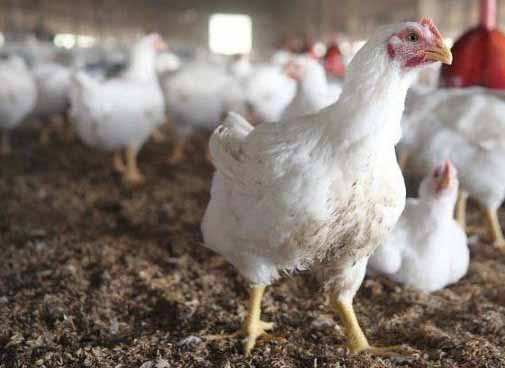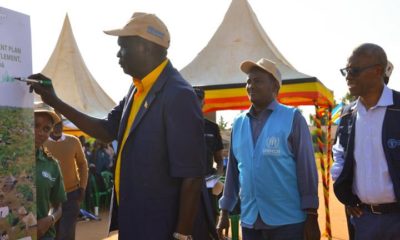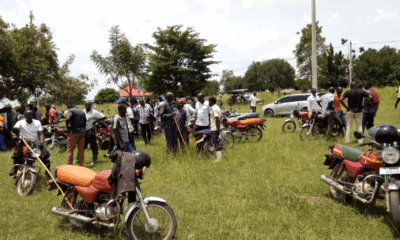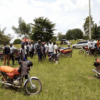News
Rise of drug-resistant pathogens, a growing danger to animal, human health and welfare in Uganda, warns FAO & MAAIF
Study calls for coordinated action between human health and agricultural sector to tackle resistant pathogens

Poultry farming is an industry that is heavily dependent of anti-biotic use
Treatment of various disease in humans, animals, poultry and fish has become increasingly difficult in Uganda because pathogens have become resistant to drugs, according to a joint study by Uganda’s Ministry of Agriculture, and the UN food and Agriculture Organization (FAO).
The outcome is that the rising resistance of pathogens to the available drugs continues to undermines public health, but also threatens to deepen poverty, as farmers incur losses arising from stubborn disease outbreaks.
The study also notes that as farming becomes a loss-making venture, there’s a danger of rising malnutrition.
A study that was carried out by experts from FAO and Uganda’s Ministry of Agriculture (MAAIF) between November 2020 and February 2021, shows that many pathogens have become resistant to drugs.
FAO says that although antimicrobials such as antibiotics, antifungal, antiparasitic, antiviral and pesticide agents, have saved millions of lives, substantially reduced the burden of diseases in people and animals, their widespread use has triggered resistance, necessitating solutions to address the challenge.
“In Uganda, in both humans and animals, infections from resistant bacteria are increasing and some disease-causing germs (pathogens) such as bacteria, viruses, fungi and parasites have become resistant to multiple types or classes of antimicrobials and medicines- including antibiotics.
FAO adds: “The loss of effective antimicrobials is a threat to the country’s economic activities, undermines the country’s ability to ensure food security and fight infectious and zoonotic diseases in the growing population.
FAO cites the possibility of failing to manage disease outbreak, such as Anthrax, which affect both animals and humans.
According to Priya Gujadhur, FAO Uganda Deputy Representative, antimicrobial resistance is spreading further and faster every day. If left unaddressed,
She says: “AMR may force tens of millions more people into extreme poverty, hunger and malnutrition”.
“Within the next 10 years, antimicrobial use for livestock alone is projected to nearly double to keep pace with the demands of our growing human population. In just ten years’ time, 24 million more people – the equivalent of the entire population of Australia – may be forced into extreme poverty as a result of AMR” she added.
According to Juliet Sentumbwe- Director of Animal Resources at the Ministry of Agriculture, Animal Industry and Fisheries (MAAIF), antimicrobial resistance is a big challenge that is, however, preventable and requires different actors to use reliable information to create awareness about the risks and prevention of misuse of antimicrobials.
“Antimicrobial resistance is a silent killer. It is a big risk to our national economy and will be too expensive for us as a country to handle, said Sentumbwe. “However, it is preventable and we need to understand the risks we face so that, working with Government and non-state actors, we can develop guidelines, interventions and policies to address the problem”, she added.
Sentumbwe and Gujadhur were speaking at a workshop to disseminate preliminary findings of an assessment on the risks of antimicrobial resistance in animal production systems- particularly livestock and fisheries- as part of national efforts to tackle the fast-growing global AMR threat.
The workshop was held from 27 – 28 May 2021 at Ridar Hotel, Mukono. The risk assessment, conducted by FAO and MAAIF, provides information and reliable data to guide development of strategies to reduce and manage the risk associated with AMR.
This data can be used by public and private sectors to inform prioritization of interventions and resources to manage AMR in livestock and fisheries in Uganda.
Gujadhur emphasized the importance of using antimicrobials more responsibly and developing strategies to contain antimicrobial resistance, especially at every stage of the food chain as this would slow the spread of AMR.
From the Global Health Security Agenda (GSHA), the country assessment done in early 2014, Uganda had no coordinated actions or national plan to bring together stakeholders to address AMR.
Findings from the recent AMR risk assessment showed that the One Health approach is one of the most feasible strategies for tackling AMR. One Health integrates multiple disciplines such as veterinary, human health, environment, social sciences and wildlife, working locally, nationally and globally to attain optimal health for people, animals and the environment.
Denis Byarugaba- Antimicrobial Resistance Risk Analyst at FAO Uganda emphasized the importance of different sectors working together to tackle AMR because it is now a mutisectoral issue “and working in silos cannot work”.
“We need innovative methods to disrupt transmission and to ensure there is continuous surveillance and monitoring to track the resistant organisms”, he said.
“To determine the cost of AMR, we need data and this risk analysis is a starting point”, Byarugaba added.
FAO championing AMR management globally
The AMR Risk Assessment in Uganda was undertaken from November 2020 to February 2021. It was conducted under the aegis of the Risk analysis, risk communication and governance support for sustainable management of AMR- a global project implemented by FAO in seven countries in South America (Bolivia, Ecuador, Peru and Uruguay) and Africa (Malawi and Uganda).
Funded by the Government of Norway, this intervention helps countries to design and adopt strategies to contain AMR, based on the existing risk in terrestrial and aquatic animal production.
FAO developed an AMR risk analysis tool to obtain information associated with the risks of generation and propagation of AMR. The tool has been applied to help countries focus their resources in critical areas for managing AMR, including public and private sanitary measures for AMR containment in livestock and aquaculture production sectors
What is Antimicrobial Resistance (AMR)?
AMR happens when microorganisms such as bacteria, fungi, viruses and parasites change and become resistant to antimicrobial drugs, including antibiotics, to which they were originally susceptible.
This can be due to factors such as misuse or overuse of antimicrobials and exposure to counterfeit drugs. When antimicrobials are present in the environment at low concentrations, they can accumulate in human populations via long-term exposure to drinking water, food, or consumer goods with unknown health consequences.
The sheer magnitude and complexity of the AMR crisis and antimicrobial pollution results in the need for a coordinated and integrated One Health multi-sectoral approach inclusive of the public and animal health sectors, the agricultural production sectors (crops, forestry, fisheries, aquaculture & livestock), and the environment and ecosystem sectors.
At the African regional level, FAO, World Organisation for Animal Health (OIE), World Health Organization (WHO), African Union African Centre for Disease Control and Prevention (Africa CDC), African Union Inter-African Bureau for Animal Resources – AU-IBAR) and Regional Economic Communities (RECs) have pooled resources and efforts to address AMR across the human, animal and ecosystem domains following the “One Health” approach.
Comments


























